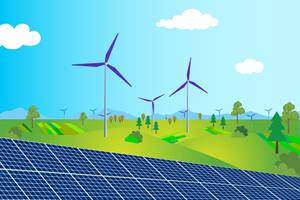Energy communities
The development of local, community-owned energy projects

Energy communities are renewable energy generation, storage or distribution projects that are owned and controlled by members of the local community, and sometimes the local government. This transformative strategy reorganises relationships of energy generation and ownership; profits from community energy projects are usually either distributed to local participants, or are used for the benefit of the local community. Energy communities can be formed around solar or wind or other renewable generation assets, battery or other storage resources, microgrids, or other renewable energy services.
Starting an energy community requires significant upfront investment. However, municipalities and community groups in former coal regions sometimes see community energy projects as a way to regain control over some of the energy, and its economic benefits, that have traditionally been associated with their regions. It is largely citizens, small groups, and local governments who engage in this strategy.
Many existing energy communities in Europe are not a direct result of decarbonisation policy. However, as transitions progress, they are increasingly viewed as an effective strategy to address issues of social and economic deprivation in transitioning coal-intensive regions.
Further reading
European Commission: Energy communities. Read here.

Funding
The CINTRAN project has received funding from the European Union’s Horizon 2020 research and innovation programme under grant agreement No. 884539. The sole responsibility for the content of this website lies with the authors and does not necessarily reflect the opinion of CINEA or other EU agencies or bodies.